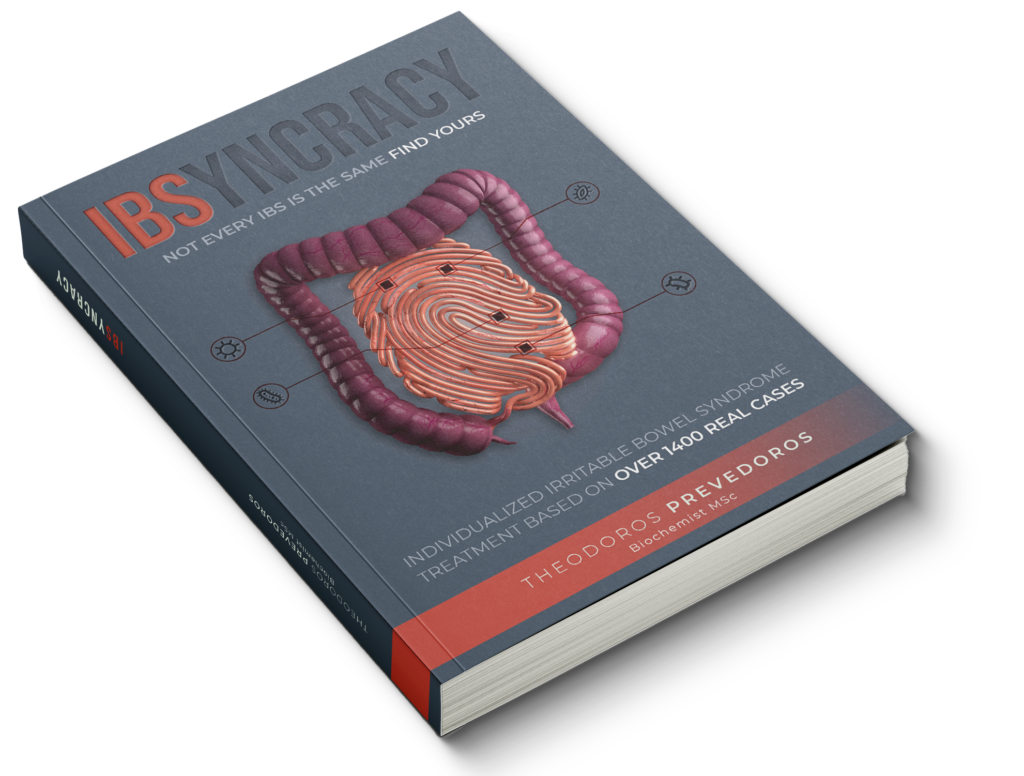
At first you got gallstones. Then you removed your gallbladder. Now you suffer from irritable bowel syndrome
THIS specific sequence has its specific treatment. find out in IBSYNCRASY

Gallstones are a common condition that affects millions of people worldwide. They are small, hard deposits that form in the gallbladder, a small organ located just below the liver. While anyone can develop gallstones, certain factors increase the risk, including being female, being over the age of 40, being overweight or obese, and having a family history of gallstones.
Pregnant women, especially during the third trimester, women who have recently given birth or are breastfeeding are also at an increased risk of developing gallstones. The exact reason why women who have recently given birth or are breastfeeding are at an increased risk is not fully understood. However, it is thought to be related to the hormonal changes that occur during pregnancy and breastfeeding. These hormonal changes can cause the liver to produce more cholesterol, which can lead to the formation of gallstones.
So, how do these things form? When there’s too much cholesterol in the bile, it can crystallize and form cholesterol-rich gallstones. Hormonal changes during pregnancy and postpartum can also cause gallstones. Estrogen, prolactin, and progesterone are hormones that can contribute to this process.
Estrogen is a hormone produced by the ovaries (in women) or testes (in men) and helps regulate the menstrual cycle and other functions in the body. High levels of estrogen can increase the cholesterol in the bile, leading to the formation of cholesterol-rich gallstones.
Prolactin is another hormone that can cause gallstones. It’s produced by the pituitary gland and aids in lactation and the production of breast milk. However, high levels of prolactin can also increase cholesterol production in the bile, potentially causing the formation of biliary sludge, which can then turn into gallstones.
Progesterone is a hormone produced by the ovaries and adrenal glands that helps with pregnancy and the menstrual cycle. It can also affect the production of bile. High levels of progesterone can increase the amount of bile salts in the bile, potentially leading to the formation of gallstones.
Laparoscopic cholecystectomy is a surgical procedure that involves removing the gallbladder through small incisions in the abdomen. The gallbladder is a small organ that is located just below the liver and plays a role in digesting fats. It does this by storing and releasing bile, which is a digestive fluid produced by the liver. When gallstones form in the gallbladder, they can cause a range of symptoms, including abdominal pain, diarrhea, bloating, and nausea. If left untreated, gallstones can cause serious complications, such as inflammation of the gallbladder, infection, and even damage to the liver or pancreas.
Laparoscopic cholecystectomy is a minimally invasive surgical technique that has become the standard of care for treating gallstones. It is performed under general anesthesia and typically takes less than two hours. During the procedure, the surgeon makes a few small incisions in the abdomen and inserts a laparoscope, which is a thin, lighted tube with a camera at the end. The laparoscope allows the surgeon to see inside the abdomen and perform the surgery using long, thin instruments that are inserted through the other incisions.
After the removal of the gallbladder the incisions are closed with sutures or surgical staples. Most people are able to go home the same day, although some may need to stay in the hospital overnight for observation. Overall, laparoscopic cholecystectomy is a safe and effective way to treat gallstones and prevent complications. It typically results in a faster recovery time and less postoperative pain compared to open surgery, which involves a larger incision.

After gallbladder removal, the presence of gallstones (and other gallbladder problems) is no longer an issue. The symptoms of gallbladder stones should belong to the past. However, it is important to note that the removal of the gallbladder can lead to other changes in the body. The gallbladder is not just a storage organ for bile, but it also helps with the digestion of fats and the absorption of fat-soluble vitamins, it produces a very important protein and communicates with other digestive organs. In fact, we know now that it produces and excretes important substances for the digestive system. Without the gallbladder, the body must adjust to new standards of digestion. This can sometimes lead to problems such as irritable bowel syndrome (IBS), which is the most common complication after cholecystectomy.
After cholecystectomy, the production and flow of bile in the body can be affected. Without a gallbladder, bile is released directly into the small intestine through the common bile duct. This can lead to changes in the consistency and flow of bile, which can affect the digestion and absorption of fats and fat-soluble vitamins in the intestine.
Scar tissue often appears around the area where the gallbladder was removed. This is a normal part of the healing process and is not typically a cause for concern. However, in some cases, scar tissue can cause complications, such as the formation of adhesions, which are bands of scar tissue that can bind organs together. The risk of developing adhesions after the surgical removal of the gallbladder may be higher in people who have had previous abdominal surgeries or who have certain risk factors, such as endometriosis or inflammatory bowel disease
After the removal surgery changes in the balance of bacteria in the gut, known as the microbiome may appear. The gallbladder helps to store bile and regulate the flow of bile into the small intestine, and bile acids, which are produced by the liver and stored in the gallbladder, play a crucial role in maintaining the balance of bacteria in the gut. Without the gallbladder, the flow of bile into the small intestine may be altered, which can affect the microbiome.
After the surgery, changes in the pH of the gut may gradually appear. The gallbladder helps to regulate the flow of bile into the small intestine, and bile acids, which are produced by the liver and stored in the gallbladder, play a crucial role in maintaining the pH of the gut. Bile is alkaline in nature, and its presence in the gut can help to neutralize the acidic environment of the stomach. However, it is important to note that the acidic nature of the gut is necessary for proper digestion and absorption of nutrients. Constant alkalinization of the gut can be detrimental to health. Without the gallbladder, the flow of bile into the small intestine may be altered
After the operation, SP-D protein is reduced in the gut. SP-D is a molecule that is produced by the gallbladder and is involved in several important physiological processes, including the immune response and the maintenance of the integrity of the lung and gut mucosa. SP-D is a member of the collectin family of proteins, which have both lectin and collagen-like domains. It plays a key role in the innate immune system by recognizing and binding to pathogens, such as bacteria and viruses, and promoting their clearance from the body. Without the gallbladder, the production of SP-D may be reduced, which can increase the risk of certain health problems, such as gastrointestinal infections and inflammatory bowel disease
The incidence of IBS after cholecystectomy is relatively common, and it is estimated that up to 50% of people who undergo this surgery may develop IBS within the first year after the procedure. This is significantly higher than the prevalence of IBS in the general population, which is estimated to be around 10-15%. Women are more likely to develop IBS after cholecystectomy than men, with a female-to-male ratio of around 2:1. The risk of developing IBS also increases with age, with the highest incidence occurring in people over the age of 60. The symptoms of IBS after cholecystectomy can vary, but they often include abdominal pain, bloating, and changes in bowel habits, such as diarrhea or constipation. The severity of these symptoms can range from mild to severe, and they can significantly impact a person’s quality of life. The treatment of women with post-cholecystectomy IBS should be highly individualized, as the aforementioned causes are not the only ones, and different combinations of causes may produce different pathologies.

| Cookie | Duration | Description |
|---|---|---|
| cookielawinfo-checkbox-analytics | 11 months | This cookie is set by GDPR Cookie Consent plugin. The cookie is used to store the user consent for the cookies in the category "Analytics". |
| cookielawinfo-checkbox-functional | 11 months | The cookie is set by GDPR cookie consent to record the user consent for the cookies in the category "Functional". |
| cookielawinfo-checkbox-necessary | 11 months | This cookie is set by GDPR Cookie Consent plugin. The cookies is used to store the user consent for the cookies in the category "Necessary". |
| cookielawinfo-checkbox-others | 11 months | This cookie is set by GDPR Cookie Consent plugin. The cookie is used to store the user consent for the cookies in the category "Other. |
| cookielawinfo-checkbox-performance | 11 months | This cookie is set by GDPR Cookie Consent plugin. The cookie is used to store the user consent for the cookies in the category "Performance". |
| viewed_cookie_policy | 11 months | The cookie is set by the GDPR Cookie Consent plugin and is used to store whether or not user has consented to the use of cookies. It does not store any personal data. |